In the manufacturing industry around the world, industrial equipment is being made IoT-compatible in a move toward the realization of smart factories that utilize massive amounts of data. Hitachi Industrial Equipment Systems Co., Ltd. provides two industrial IoT solutions that collect and utilize data based on the company’s long experience in supplying products to the industrial sector. The first of these is a lifecycle management service that optimizes the operation and maintenance of facilities and equipment. A service that can monitor the status of equipment through the cloud was launched. The other is a programmable automation controller system that optimizes the operational control of production systems, and provision of the HX Series Industrial Controllers for IoT Applications that forms the core has commenced. The HX Series has been applied to the Hitachi Industrial Equipment Systems inverter production line and is accumulating know-how on productivity improvement activities. Moving forward, Hitachi will link information between these two industrial IoT solutions to contribute to further optimization.
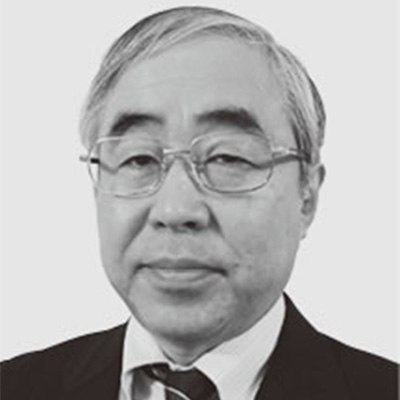
Internet of Things & Life Cycle Management Development Office, Business Operations Group, Hitachi Industrial Equipment Systems Co., Ltd. Current work and research: Development of business utilizing industrial IoT solutions.
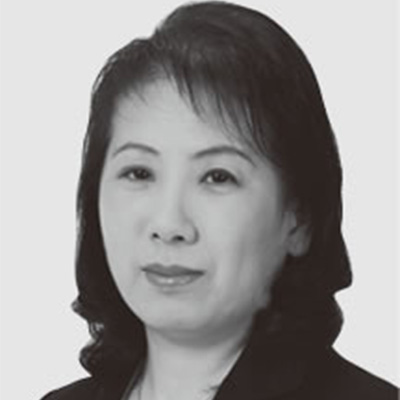
Internet of Things & Life Cycle Management Development Office, Business Operations Group, Hitachi Industrial Equipment Systems Co., Ltd. Current work and research: Development of business utilizing industrial IoT solutions.
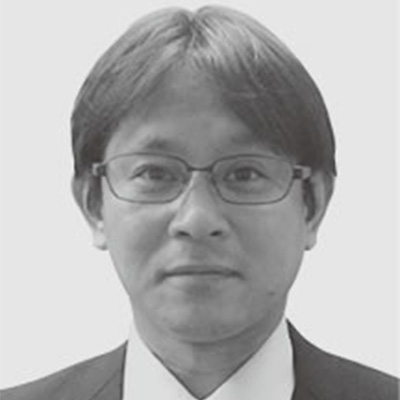
Life Cycle Management Center, Service Division, Solution & Service Management Group, Hitachi Industrial Equipment Systems Co., Ltd. Current work and research: Development of the Life Cycle Management business.

Business Planning Department, Drive Systems Division, Business Operations Group, Hitachi Industrial Equipment Systems Co., Ltd. Current work and research: Planning of business for drive system products.
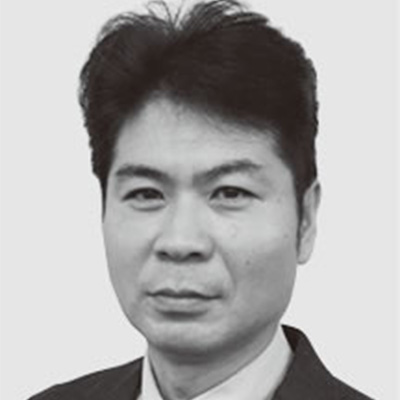
Industrial Control Systems Design Department, Drive Systems Division, Business Operations Group, Hitachi Industrial Equipment Systems Co., Ltd. Current work and research: Development of industrial controller for IoT applications.
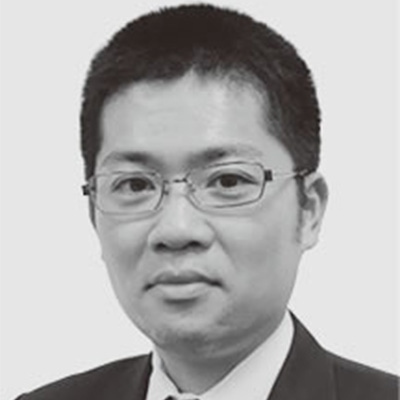
Infrastructure Systems Research Department, Center for Technology Innovation - Systems Engineering, Research and Development Group, Hitachi, Ltd. Current work and research: Research on information and control platforms. Society memberships: The Society of Instrument and Control Engineers.

Infrastructure Systems Research Department, Center for Technology Innovation - Systems Engineering, Research and Development Group, Hitachi, Ltd. Current work and research: Research on information and control platforms.
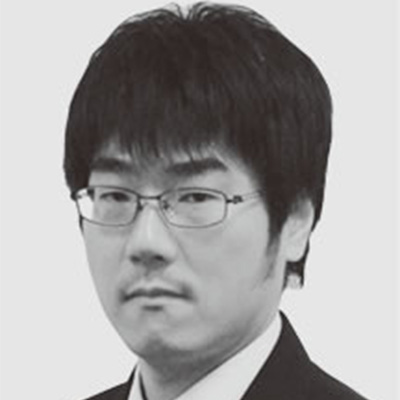
Information Control Project, R&D Center, Hitachi Industrial Equipment Systems Co., Ltd. Current work and research: Research on information technologies applied to industrial equipment. Society memberships: The Society of Instrument and Control Engineers, and The Robotics Society of Japan.

Information Control Project, R&D Center, Hitachi Industrial Equipment Systems Co., Ltd. Current work and research: Research on information technologies applied to industrial equipment.
In recent years, the trend in the manufacturing industry has been to utilize huge amounts of data to realize smart factories. This is called the Industrial Internet in the USA and Industrie 4.0 in Germany. Both are aimed at realizing smart factories by collecting data from the sites and the external environment, and utilizing the data to perform optimization utilizing operational experience and knowledge.
Production systems and equipment in the manufacturing industry have become more advanced over the years through technological innovation. Production systems and equipment undergo advanced control according to large quantities of information, data and various field networks. Recently, information exchange between the supply chain, delivery chain, and factory has started, and the importance of data and information processing technology is increasing.
In one form of smart factory, a large number of business establishments and companies mutually interact to ultimately provide products and services. These business establishments and companies are connected to each other via a network. Furthermore, connecting suppliers, factories, logistics, and consumers to this network would enable real-time information sharing, the creation of data on human work and know-how, and the accumulation and application of know-how and knowledge. As a result, a wide range of decisions can be made quickly in real time in the manufacturing process and manufacturing can be visualized from individual processes to overall production. Based on this, quality and troubleshooting capabilities are expected to improve, and furthermore, the benefit of being able to accumulate human-dependent know-how as data is expected through utilizing innovative information and communication technology (ICT) (see Figure 1).
Figure 1 — Industrial IoT Solution by Hitachi Industrial Equipment Systems
 Hitachi Industrial Equipment Systems will work on the realization of smart factories via two approaches: optimization of operation and maintenance of facilities and equipment, and optimization of operation and control of production systems.
Hitachi Industrial Equipment Systems will work on the realization of smart factories via two approaches: optimization of operation and maintenance of facilities and equipment, and optimization of operation and control of production systems.
Figure 2 — IoT Cloud Monitoring Service in the LCM Service
 An outline of the monitoring system configuration is shown. This aggregates equipment information on the cloud and makes it available for viewing on the web. This strengthens links between customers and maintenance service networks, leading to the provision of added value.
An outline of the monitoring system configuration is shown. This aggregates equipment information on the cloud and makes it available for viewing on the web. This strengthens links between customers and maintenance service networks, leading to the provision of added value.
Hitachi Industrial Equipment Systems Co., Ltd. has supplied products to the industrial sector for many years. Based on these achievements, the company has launched initiatives on industrial Internet of Things (IoT) solutions that collect and utilize data and feed back the results in order to respond to expectations for smart factories.
Based on the concept of “can connect, can be connected,” Hitachi Industrial Equipment Systems products contribute to the realization of smart factories through manufactured items and services.
Specifically, a lifecycle management (LCM) service and programmable automation controller (PAC) system are introduced below as two industrial IoT solutions that Hitachi Industrial Equipment Systems is working on.
The LCM service strengthens operations and maintenance services based on a core of many years of achievements (know-how) with the aim of optimizing the operation and maintenance of facilities and equipment (see Figure 2). An IoT cloud monitoring service is applied to enhance the LCM service. The concept of the LCM service is to provide high value-added services according to customer needs from the introduction of industrial facilities to after-sales services.
The PAC system integrates control and information to enhance automation and drive equipment in order to optimize the operation and control of production systems. Various solutions cultivated over the years are applied for this purpose. The concept of the PAC system is to provide a system that applies ICT to the optimization of operations as well as the advancement of production system control.
Hitachi will mutually link these two IoT solutions to contribute to further optimization.
Figure 3 — Example of Monitoring Service Screen and Report
 In addition to confirming operation data, inspection histories, and other information, it is also possible to output operation reports.
In addition to confirming operation data, inspection histories, and other information, it is also possible to output operation reports.
This section describes the LCM service and IoT cloud monitoring service for equipment at industrial facilities.
The Hitachi Industrial Equipment Group has a full-service network. Using this, the LCM service supports “safe, secure, and stable operations” according to the customer's needs from introduction of equipment to after-sales service, and provides high added-value through things such as labor reduction, simplification, efficiency, and optimization.
To realize this LCM service, Hitachi Industrial Equipment Systems launched an IoT cloud monitoring service.
Air compressors are one of Hitachi Industrial Equipment Systems’ main product lines. For example, the application of the IoT cloud monitoring service to the LCM service of these air compressors contributes to the realization of one-stop maintenance by enhanced coordination with the maintenance services of retailers and dealers. Data such as discharge temperature, current value, and power consumption are gathered in the cloud from the air compressor using a mobile network, and the data can be monitored on a dedicated screen (see Figure 1).
Figure 3 shows the monitoring screen of an air compressor. Operation data and graph displays, inspection and fault histories, troubleshooting guides, and other information are prepared so that the operating state of the air compressor can be seen at a glance. In addition to the monitoring screen, operation reports and the like are also submitted.
Figure 4 — Conceptual Diagram of PAC System
 The PAC system is positioned between the production system and the higher-level system, enabling a seamless connection between the systems. Therefore, an environment can be quickly constructed for data collection, analysis, determination, and so forth.
The PAC system is positioned between the production system and the higher-level system, enabling a seamless connection between the systems. Therefore, an environment can be quickly constructed for data collection, analysis, determination, and so forth.
Next, this section introduces the PAC system, which optimizes the operation and control of production systems. The system realizes manufacturing and service innovation through application of the IoT. A conceptual diagram of the PAC system is shown in Figure 4.
At the production site, automation and drive equipment controls the machinery and equipment that constitute the production system. The PAC system focuses on the data and control content handled by the automation/drive equipment, and seamlessly connects the production system to the higher-level systems in the factory or the cloud system.
The features of the PAC system are that it enables the production system control and ICT to coexist, and that it simplifies connection with the host system, which was problematic with conventional systems from an information systems perspective.
These features make it possible to quickly construct an environment for the collection of data and visualization of the production site; the accumulation of data in higher-level systems; the analysis, diagnosis, determination, and visualization of the data; and the execution of control based on the analysis results. This enables flexible modifications thereafter.
The accumulated data in the higher system can be linked with heterogeneous systems and developed into various services.
This section introduces the Industrial Controllers for IoT Applications HX Series, which were developed as the core controllers of the PAC system.
Figure 5 — Feature Functions of the HX Series
 The HX Series is compatible with many communication methods and saves space by integration of control and communication functions.
The HX Series is compatible with many communication methods and saves space by integration of control and communication functions.
The main point regarding IoT-compliant communications is the enhancement of communication functions and open access. Figure 5 shows a diagram of this.
This includes Object Linking and Embedding (OLE) for Process Control Unified Architecture (OPC UA), File Transfer Protocol (FTP) servers, and simple monitor functions, all of which support ease of connection with the production system from an information systems perspective, as well as Modbus support, which has been used for many years on site, the recently popular EtherCAT support, and motion control that operates above it.
In addition, the HX Series is equipped with Universal Serial Bus (USB) memory, Secure Digital (SD) memory, and three Ethernet ports, integrating control and communication functions and achieving space savings.
Hitachi has applied the HX Series to one of its production lines and used information system functions to commence trials of IoT solutions that support production improvement activities.
The HX Series was applied to a Hitachi inverter production line, continual improvement processes were established, and support for continuous productivity improvement activities and accumulation of know-how is being promoted (see Figure 6).
Figure 6 — Examples of Application to Production Lines
 The HX Series was applied to a Hitachi inverter production line. Data acquired from the production facility were accumulated on a server. Using these data to visualize the operating status promotes improvement activities at the production site.
The HX Series was applied to a Hitachi inverter production line. Data acquired from the production facility were accumulated on a server. Using these data to visualize the operating status promotes improvement activities at the production site.
The HX Series is installed in an automated inverter production line that has been in operation since 2010. The process information is acquired from an existing programmable logic controller (PLC), and data are accumulated on ThingWorx by PTC on the factory-owned servers. By utilizing these data, the operating status was visualized on the computers or mobile devices of relevant persons in such a way that it could be understood at a glance. In addition, monitoring of the detailed status of the HX Series itself has been made possible along with remote operation of programs and setting changes from the office.
The period for adding and launching the HX Series was about two months without stoppage of work done at the factory. Thereafter, the system has been continually used through incorporation into ongoing daily improvement activities at the production site.
A feature of this system is that the existing PLC, which controls the whole production line, utilizes the control data, thereby making a small start toward productivity improvements. Moving forward, the HX Series will be applied to improvement activities for continuous production activities.
As shown in Figure 7, the HX Series units collect data in the information management field while conducting control in the industrial field. The units utilize the collected data and enable the seamless coordination of control based on the analysis results. As a new industrial controller that integrates core control and communications for automatic machinery and production facilities, the product integrates communication control, motion control, and sequence control based on the concept of global/open access, high-performance, and simplification.
Regarding global/open access, the HX Series has support for international standard programming languages, EtherCAT, and OPC UA communication. For high performance, the series is equipped with functions that enable motion control, communication control, support for SD cards, and so forth. Regarding simplification, the on-site control is made into a software PLC, information communication can be done through Internet Protocol (IP) communication, each control is integrated, and options for various field networks are also supported in addition to three independent Ethernet connections.
Furthermore, control security measures are implemented by means such as prevention of unauthorized access from the outside, management of user access, and hidden display functions for dedicated function libraries.
By way of a linking function with the information field, the HX Series has a function for data visualization. Conventionally, a dedicated display device such as a PLC is required to display data, but it has become possible to display graphs and control panel-like displays as shown in Figure 8 in the browser of a handheld personal computer (PC) or mobile device. Concerning the pictures and variables to display in the HX Series, programming software is provided to enable visualization even without a dedicated display unit.
The series is equipped with OPC UA server functions for connection with a higher-level system.
OPC UA is a protocol that enables secure and reliable vendor-independent transmission from a sensor or site level to the manufacturing level, production planning, or enterprise resources planning system.
Conventionally, in the case of constructing a system using supervisory control and data acquisition (SCADA) or a manufacturing execution system (MES), communication software suitable for use of the PLC was prepared, an OPC server was constructed on a PC or server, and SCADA or MES software was executed that carries out screen display and operation instructions.
SCADA, MES, and a controller supporting OPC UA eliminate disjointed communications by various companies and enable multi-vendor compatibility (see Figure 9).
The HX Series is equipped with functions that make it easier for information engineers to manage, and SD memory and FTP servers can be used in addition to visualization functions and OPC UA.
A file can be created in the SD memory by using a function block for turning the data in the HX Series into a file [e.g., a comma-separated value (CSV) file]. This file can be retrieved and read out by a PC (see Figure 10). It is also possible to retrieve and write files remotely by FTP operation.
At the Hitachi Industrial Equipment Systems production line introduced earlier, a CSV file was created from the data collected by the HX Series, the data were viewed using the visualization function, and the system was constructed while ascertaining the situation in detail. An engineer specializing in parallel information systems created a screen to confirm and display data on a desktop PC by FTP operation.
Next, the control programming of the HX series is described (see Figure 11). The HX Series employs software called the International Electrotechnical Commission (IEC) 61131-3 Development System CODESYS. There are more than 400 vendors equipped with CODESYS, and tens of thousands of users worldwide.
IEC 61131-3 has five different languages which can be used according to the purpose. Many motion control libraries are provided together with CODESYS. Software development accounts for a large proportion of the cost in system construction, so by adopting IEC 61131-3, software development efficiency for users is enhanced in comparison with vendor-specific programming methods.
Figure 11 — IEC 61131-3 Programming Software
 The HX Series can be programmed in languages conforming to international standards. Five different languages can be used according to the purpose. Software development efficiency can be improved compared with conventional vendor-specific programming methods.
The HX Series can be programmed in languages conforming to international standards. Five different languages can be used according to the purpose. Software development efficiency can be improved compared with conventional vendor-specific programming methods.
Figure 12 — Linkage with the IoT Platforms of Each Company
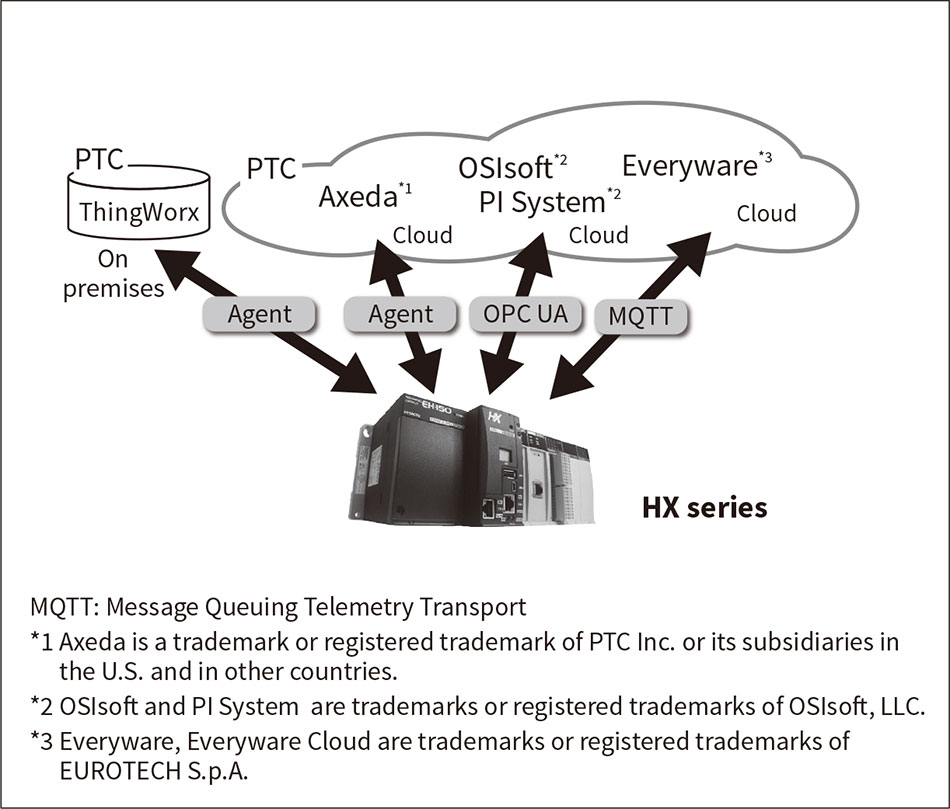 The HX Series can connect with the IoT platform provided by each company.
The HX Series can connect with the IoT platform provided by each company.
This section describes connections with various information system IoT platforms.
In addition to ThingWorx of PTC described in the Hitachi production system trial above, connection operations with Axeda of PTC, PI System of OSIsoft, LLC, Everyware Cloud*3 of Eurotech, and others are being trialed, enabling flexible support through open access and expanding the potential of various kinds of connections (see Figure 12).
For Lumada, connection is being promoted for the operational technology connection part utilizing the HX Series within the Hitachi Group to enable data links to various solutions.
This paper described IoT solutions for industrial facilities and IoT-compatible equipment. The LCM service using cloud monitoring for facilities was introduced as a solution and the Industrial Controllers for IoT Applications HX Series was explained by way of IoT-compatible equipment. Furthermore, an initiative to apply the HX Series to an actual production line and support production improvement activities was described.